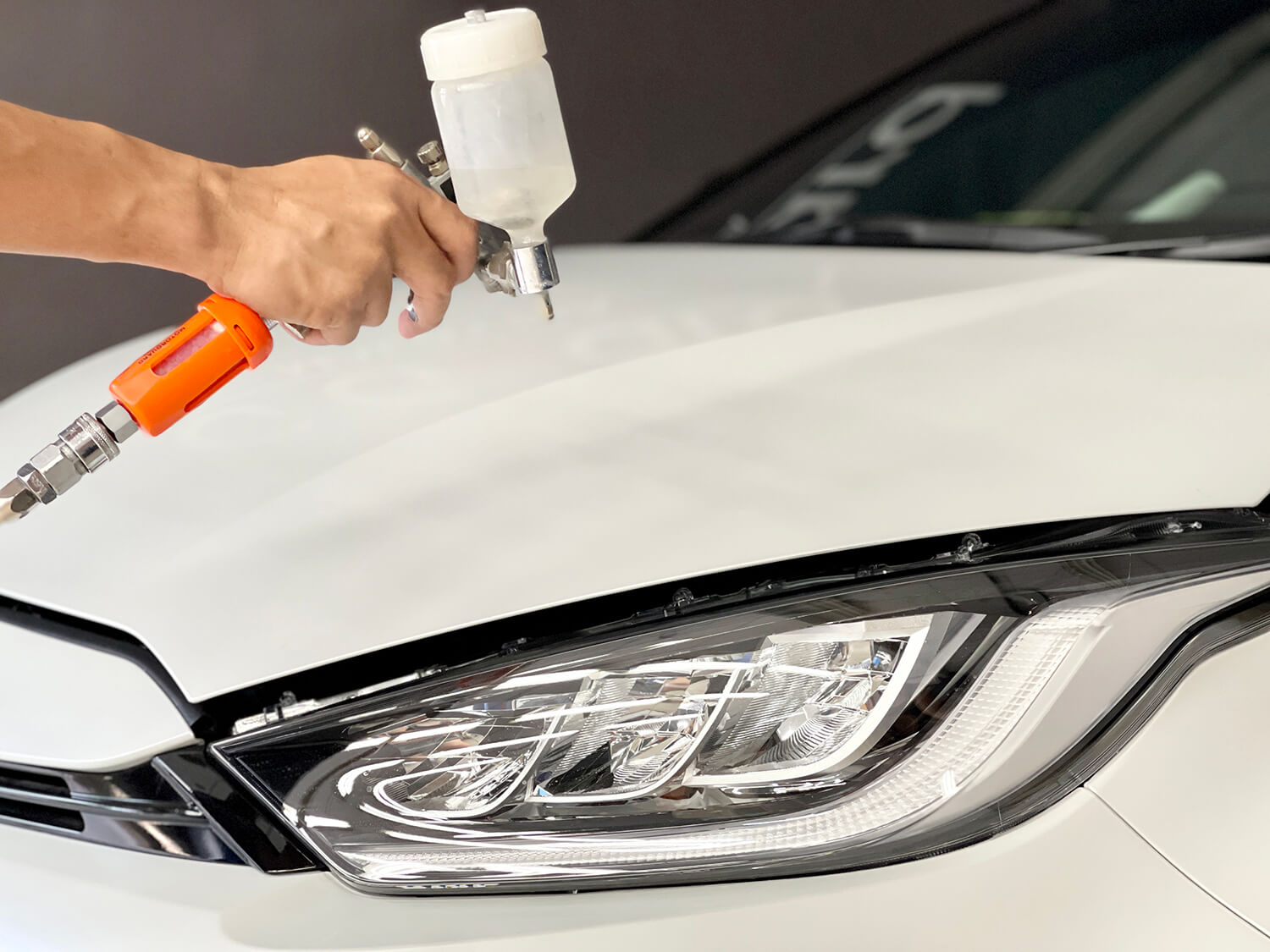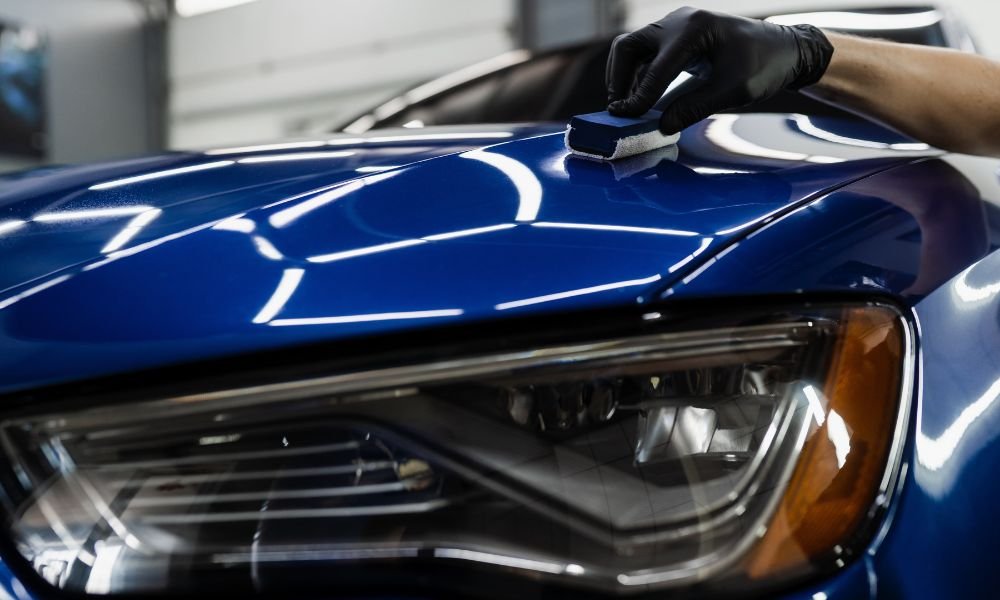The Enduring Benefits of Ceramic Coating for Your Car’s Paint and Resale Value
The Enduring Benefits of Ceramic Coating for Your Car’s Paint and Resale Value
Blog Article
Why Ceramic Coating Is the Ultimate Solution for Car Paint Defense
In the world of automobile care, ceramic coating has emerged as a remarkable choice for paint protection, using a degree of toughness and durability that conventional methods can not match. As we check out the multifaceted advantages and distinct homes of ceramic finishes, it ends up being obvious why critical auto proprietors are increasingly transforming to this innovative innovation for safeguarding their investments.
Benefits of Ceramic Coating
Ceramic coating provides countless advantages for cars and truck paint security, making it a favored selection amongst automotive enthusiasts and specialists alike. Among the most substantial benefits is its remarkable resilience. Unlike conventional waxes and sealants, ceramic coatings produce a solid, durable bond with the lorry's surface area, using protection that can last for many years with correct upkeep.
One more secret advantage is the hydrophobic residential or commercial properties of ceramic layers, which ward off water and pollutants. This implies that dirt, gunk, and various other environmental toxins are less likely to adhere to the surface area, resulting in much easier cleansing and reduced maintenance time. In addition, the glossy surface supplied by ceramic coatings boosts the lorry's look, maintaining its showroom sparkle.
Furthermore, ceramic finishes supply UV security, protecting the paint from harmful sun rays that can create fading and oxidation over time. They also give a level of scratch resistance, helping to minimize the event of small abrasions. Generally, the investment in ceramic coating not just maintains the aesthetic charm of the vehicle but also improves its longevity, making it an optimal option for auto paint security.
Exactly How Ceramic Coating Works
Comprehending how ceramic coating works is basic to valuing its safety capabilities. Ceramic layers are made up of sophisticated nanotechnology that creates a sturdy, hydrophobic layer externally of a lorry's paint. This layer is primarily comprised of silica dioxide (SiO2), which bonds chemically with the paint, developing a strong, safety barrier that improves the surface's strength.
When applied, the coating loads in microscopic imperfections in the paint, causing a smooth, glossy finish that not just improves the vehicle's appearance but likewise supplies an awesome defense versus ecological contaminants. This consists of UV rays, bird droppings, tree sap, and various other hazardous materials that can deteriorate paint high quality.
The hydrophobic residential properties of ceramic coatings cause water to grain and roll off the surface area, bring dirt and debris with it. Eventually, recognizing these devices highlights why ceramic coating is pertained to as an unrivaled service for cars and truck paint defense. ceramic coating.

Contrasting Ceramic Coating to Wax
When examining paint defense options, many car proprietors commonly discover themselves torn in between the enduring allure of typical wax and the modern-day advancement of ceramic coating. Wax has long been the best option for automotive fanatics as a result of its natural structure, ease of application, and shiny surface. It provides a temporary shield against ecological pollutants, UV rays, and moisture, commonly lasting a couple of weeks to a few months prior to calling for reapplication.
In contrast, ceramic coating supplies an advanced solution, utilizing nanotechnology to create a resilient, hydrophobic layer on the lorry's surface. This layer bonds chemically with the paint, providing a formidable barrier against scrapes, oxidation, and dangerous pollutants. Unlike wax, which can reduce in performance with time, ceramic finishings are designed to withstand harsh conditions and maintain their protective properties for a prolonged duration.

Long-Term Protection and Toughness
The long life of paint defense is a key factor for lots of vehicle owners, particularly those that desire to preserve their auto's look with time. Ceramic coating uses significant advantages hereof, supplying a robust shield against numerous ecological dangers. Unlike traditional wax or sealers that might last only a few months, ceramic coverings can endure for numerous years, often up to a years, depending upon the product and application.
The chemical structure of ceramic layers creates a solid bond with the cars and truck's paint, producing a hydrophobic layer that fends off water, dust, and impurities. This not just enhances the vehicle's visual appeal yet likewise minimizes the requirement for frequent cleaning, thus reducing possible damage from rough cleansing methods. In addition, ceramic layers are resistant to UV rays, which aids stop oxidation and fading of the paint, making certain that the vehicle preserves its lively color over the long term.
Additionally, the toughness of ceramic coverings means they are much less most likely to chip, crack, or peel contrasted to alternate options. This resilient defense contributes to higher resale worth, making ceramic coverings a financial investment in both beauty and long life for any lorry proprietor.
Maintenance Tips for Porcelain Coated Cars
Correct maintenance of a this ceramic coated cars and truck is important to make sure the long life and effectiveness of the protective layer. Normal washing is important; it is advised to use a pH-neutral automobile hair shampoo to stay clear of weakening the coating. Washing must be done every 2 weeks or even more regularly, depending upon ecological problems.

Additionally, using a ceramic coating maintenance spray can boost hydrophobic properties and include additional protection (ceramic coating). This should be done every couple of months for ideal results
Inspect the coating regularly for indications of wear or damage. If water no longer grains on the surface area, it might be time for a refresh or additional application.
Final Thought
To conclude, ceramic coating stands for an exceptional option for car paint protection because of its unparalleled longevity and durable bond with vehicle surface areas. The hydrophobic properties and resistance to environmental risks considerably improve the longevity and look of automotive finishes. Contrasted to typical wax, ceramic coatings supply expanded security with minimal upkeep needs. Inevitably, purchasing ceramic coating not only maintains the aesthetic allure of the car but additionally adds to its long-term value retention.
Ceramic coating provides many benefits for car paint security, making it a favored option amongst auto enthusiasts and professionals alike. In general, the financial investment in ceramic coating not only preserves the aesthetic appeal of the car however additionally improves its long life, making it an optimal solution for vehicle paint security.
Eventually, recognizing these devices highlights why ceramic coating is regarded as an unmatched solution for vehicle paint protection. ceramic coating.
When assessing paint security alternatives, numerous vehicle owners frequently find themselves torn in between the long-lasting appeal of standard wax and the modern innovation of ceramic coating.In verdict, ceramic coating check out this site represents an exceptional choice for automobile paint defense due to its unmatched longevity and durable bond with automobile surfaces.
Report this page